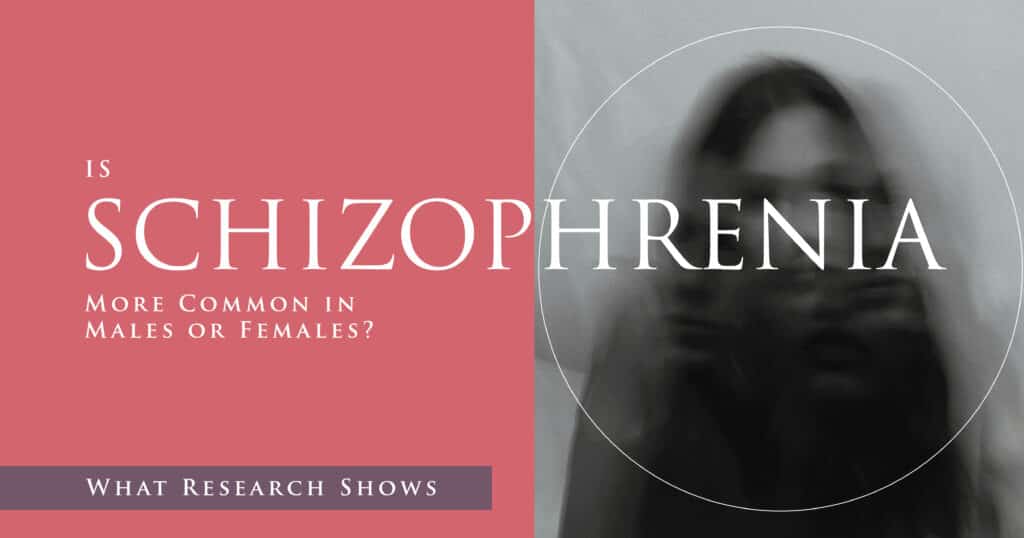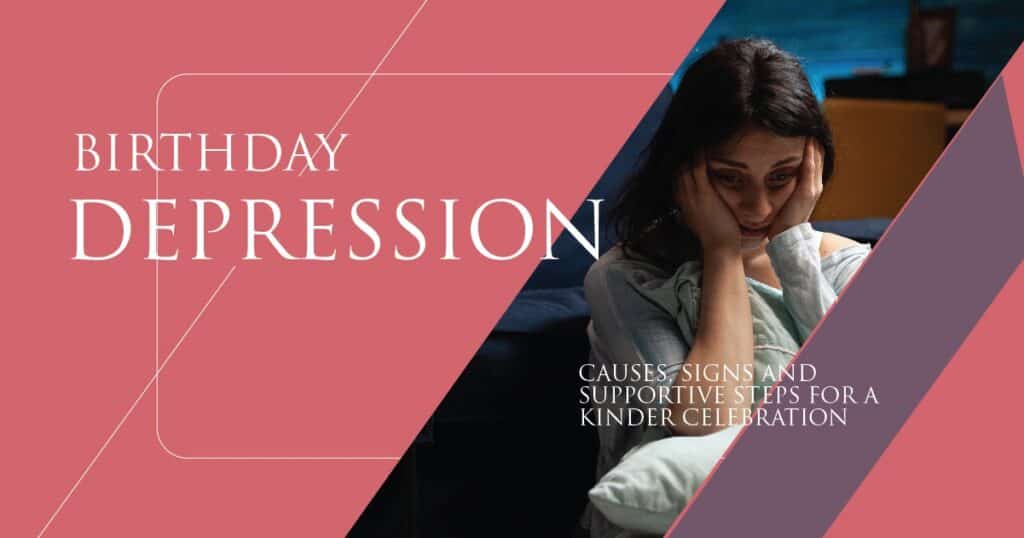Schizophrenia ranks as one of the most complex mental disorders, which people frequently fail to understand correctly. Studies indicate that schizophrenia affects one percent of the worldwide population without gender bias, but shows different manifestations during different courses of illness between men and women. So, is schizophrenia more common in males or females? And if there are gender differences, what does the research show?
Schizophrenia manifests more frequently in males among the population during their young adult stage. The age when men develop schizophrenia usually occurs during late teenage years up to early twenties, but females tend to show symptoms during a later period, following distinct clinical patterns. Researchers hypothesize that these gender-based distinctions result from biological, hormonal, and social components.
In this blog, we’ll explore the science behind schizophrenia in males vs females, examine current research findings, and break down what these insights mean for diagnosis, treatment, and long-term outcomes.
Schizophrenia in Males vs Females: Key Differences
Research findings demonstrate that schizophrenia exists among all population groups, but the condition shows different manifestations during its development phase for men and women. Gender-based differences between men and women with schizophrenia hold critical value for medical research regarding disorder treatment methods.
Men usually develop schizophrenia during the age range of 16 to 25 years. The presentation of schizophrenia manifests more intensively in men who show additional deficits in cognitive capabilities and develop negative behavioral patterns of social withdrawal and emotional detachment. Eventually, men tend to experience inferior long-term health outcomes following schizophrenia if they fail to receive early medical intervention.
Women commonly develop schizophrenia when they reach middle age, between their late twenties and early thirties. Their symptoms consist mainly of positive features, including hallucinations alongside delusions, so the initial detection of their condition tends to be easier. Women tend to recover better from schizophrenia, possibly due to protective hormonal elements, with estrogen leading the way. The symptoms of schizophrenia respond to both pregnancy and menopause because hormonal changes produce periods where symptoms improve or become worse.
Symptom Presentation
The symptoms of schizophrenia combine positive symptoms, which include hallucinations, delusions, and negative symptoms. These symptoms present as social withdrawal and a lack of motivation. Gender plays a role in which symptoms patients express during a schizophrenia episode.
| Symptom Type | Males | Females |
| Positive Symptoms | Hallucinations and delusions are common, often disorganized | Similar positive symptoms, but often accompanied by mood disorders |
| Negative Symptoms | More prominent – apathy, flat affect, social withdrawal | Less severe, social functioning often remains intact |
| Cognitive Symptoms | Impaired attention and problem-solving may be more noticeable | Cognitive symptoms may be less pronounced |
Severity and Progression
The course of schizophrenia can vary significantly between men and women. Onset age and symptom severity are two key distinctions.
| Progression Factors | Males | Females |
| Age of Onset | Typically 18–25 years old | Typically 25–35 years old |
| Course of Illness | Often chronic with fewer periods of remission | More episodic with longer symptom-free periods |
| Functional Decline | More rapid decline in social and occupational function | Slower decline; may retain better day-to-day functioning |
Response to Treatment
The treatment response of schizophrenia differs between male and female patients who receive pharmaceutical drugs in combination with therapy.
| Treatment Factors | Males | Females |
| Medication Response | Slower or less responsive; higher doses may be required | Better response to lower doses of antipsychotics |
| Side Effects Tolerance | May experience more motor-related side effects (e.g., rigidity) | More hormone-related side effects (e.g., weight gain, cycle disruptions) |
| Therapy Engagement | Less likely to engage consistently in therapy | More likely to adhere to treatment plans and engage in therapy |
San Jose Mental Health
Biological and Hormonal Factors That Play a Role
Schizophrenic manifestations demonstrate gender differences through multiple biological and hormonal elements, which shape how the disorder starts and which symptoms arise, as well as how it progresses. Examining these elements provides clarification about the reasons schizophrenia shows dissimilarities between male and female cases.
Genetic Factors and Gender Differences
Genetic factors lead to the development of schizophrenia as the primary mechanism. Genetic presence predisposes men to develop schizophrenia at an earlier stage than women, whose schizophrenia onset typically occurs later under the influence of genetic and environmental factors. Genetic factors of schizophrenia in women can include X-chromosome elements that protect against the disorder.
Hormonal Influences on Schizophrenia
The onset and the severity of schizophrenia show a strong influence from the hormone estrogen, specifically. The elevated estrogen levels during pregnancy protect women from developing acute schizophrenia symptoms. Hormonal fluctuations during menstruation, pregnancy, and menopause periods may initiate or intensify schizophrenic symptoms in certain women.
Brain Structure and Function: Gender Differences
The structure of the brain differs between female and male individuals who have schizophrenia. The brain volumes of males with schizophrenia display larger dysfunctional areas in regions that control cognition and emotional processing, which leads to worsened social and cognitive deficits. The neuroprotective actions of estrogen seem to preserve the cognitive ability of women with schizophrenia.
Immune System and Inflammation
The latest scientific investigations show that brain inflammation seems to play a role in schizophrenia development. Stress responses together with infectious outcomes within women’s immune systems could impact schizophrenia vulnerability. The immune system response and genetic factors significantly impact how schizophrenia affects both genders during its onset and development.
San Jose Mental Health
Schizophrenia Treatment Approaches for Men and Women
Schizophrenia treatment mainly involves symptom management together with improved quality of life through medication and therapy-based support. Medical approaches for schizophrenia require specific adjustments for men and women because their disease courses differ from each other. Understanding the distinct ways schizophrenia expresses itself in men and women leads to better patient outcomes through improved care.
The treatment of men with schizophrenia demands distinctive medication levels and particular cognitive therapies because these patients typically show more intense cognitive health problems and begin their illness earlier. Women tend to benefit from therapeutic interventions that recognize hormone changes because these variations influence their symptoms intensely. Women typically need psychiatric and psychological care together to address the mood symptoms, like anxiety and depression they tend to develop.
Treatment methods need separate evaluations for men and women, considering their distinctive gender-related characteristics as presented below:
| Treatment Area | Men | Women |
| Medication | May require higher doses of antipsychotics due to less sensitivity to medications | Often respond better to lower doses of antipsychotics; need monitoring for side effects related to hormones |
| Cognitive Therapy | May benefit from more intensive cognitive training due to greater cognitive impairments | Therapies dedicate their approach to assisting patients through mood fluctuations and controlling estrogen-related symptoms. |
| Psychosocial Support | Less likely to engage in therapy; requires more structured support | May be more open to therapy and peer support groups, but treatment should address emotional well-being and hormonal impacts |
| Hormonal Considerations | Testosterone’s role may affect symptom severity and treatment response | The symptoms of bipolar disorders require specific therapeutic approaches throughout the hormonal cycle phases. |
| Side Effects Management | Prone to more motor-related side effects, requiring ongoing management | More susceptible to metabolic and hormonal side effects) |
Tailoring Schizophrenia Treatment to Individuals at San José Mental Health
Every schizophrenia experience is personal, and San José Mental Health delivers customized treatment to each patient. Our assessment incorporates biological aspects, hormonal changes, and psychological influences on schizophrenia development in men and women. Our staff develops healthcare programs for every patient by analyzing their own circumstances along with gender-related factors through their personalized approach.
Our focus is on enabling people with schizophrenia to achieve satisfaction from life by employing medical treatment in combination with therapeutic techniques and personal support structures they find most effective.
San Jose Mental Health
FAQs
Is schizophrenia more common in males or females?
The diagnosis of schizophrenia mainly falls on male victims within the age bracket of 16 through 25. Schizophrenic symptoms appear mostly during the late twenties and early thirties for women.
At what age does schizophrenia typically appear in men vs women?
Schizophrenia in men reveals its first signs within the period from 16 to 25 years of age. Development of schizophrenia usually happens later in women between the ages of 25 to 35, but may appear at any time in female or male patients.
Do men and women experience different schizophrenia symptoms?
Schizophrenic symptoms occur equally between men and women, but men usually display stronger cognitive problems and negative symptoms, while women show more severe mood-related symptoms and hallucinations.
Can hormonal changes impact schizophrenia symptoms?
The symptoms of schizophrenia are considerably impacted by hormonal changes that occur during pregnancy or menopause in women. The symptoms of schizophrenia can increase or worsen in different ways based on individual circumstances following estrogen level fluctuations.
Is treatment equally effective for males and females with schizophrenia?
Schizophrenic treatment works for men and women, although specific therapies need gender-based modifications. The therapeutic needs of men with schizophrenia typically require deeper cognitive approaches, while female patients might find better results using therapies that include hormone and mood management aspects.








